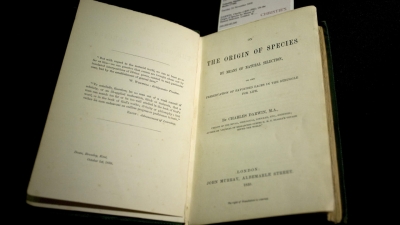
Charles Darwin, in full Charles Robert Darwin, (born February 12, 1809, Shrewsbury, Shropshire, England—died April 19, 1882, Downe, Kent), English naturalist whose scientific theory of evolution by natural selection became the foundation of modern evolutionary studies. An affable country gentleman, Darwin at first shocked religious Victorian society by suggesting that animals and humans shared a common ancestry. However, his nonreligious biology appealed to the rising class of professional scientists, and by the time of his death evolutionary imagery had spread through all of science, literature, and politics. Darwin, himself an agnostic, was accorded the ultimate British accolade of burial in Westminster Abbey, London.
Darwin formulated his bold theory in private in 1837–39, after returning from a voyage around the world aboard HMS Beagle, but it was not until two decades later that he finally gave it full public expression in On the Origin of Species (1859), a book that has deeply influenced modern Western society and thought.
Darwin’s exploratory survey on the H.M.S. Beagle had brought him into contact with a wide variety of living organisms and fossils. The adaptations he saw in the finches and tortoises on the Galapagos Islands struck him particularly acutely. Darwin concluded that species change through natural selection, or – to use Wallace’s phrase – through “the survival of the fittest” in a given environment.
Darwin’s book immediately attracted attention and controversy, not only from the scientific community, but also from the general public, who were ignited by the social and religious implications of the theory. Darwin eventually produced six editions of this book.
In time, a growing understanding of genetics and of the fact that genes inherited from both parents remain distinct entities – even if the characteristics of parents appear to blend in their children – explained how natural selection could work and helped vindicate Darwin’s proposal.
Credit : Britannica
Picture Credit : Google




